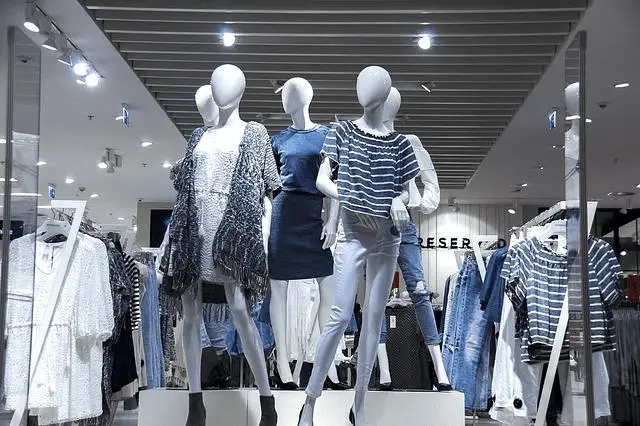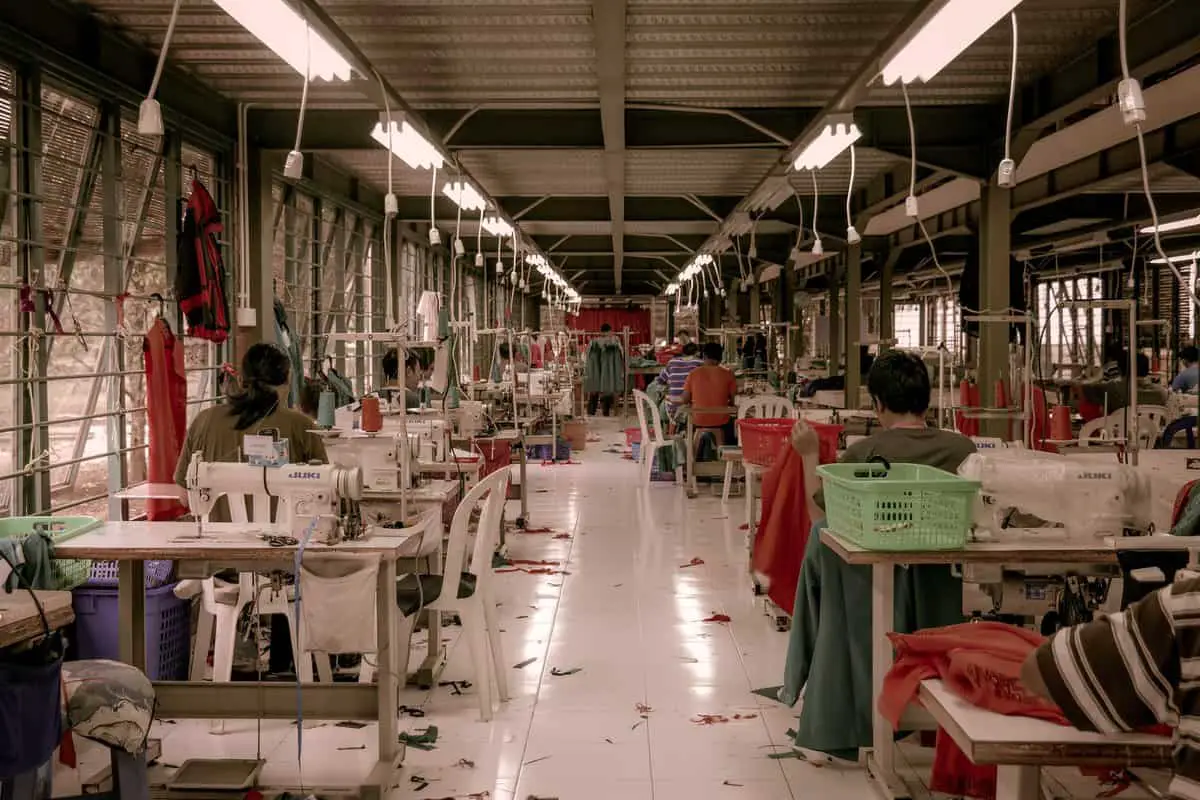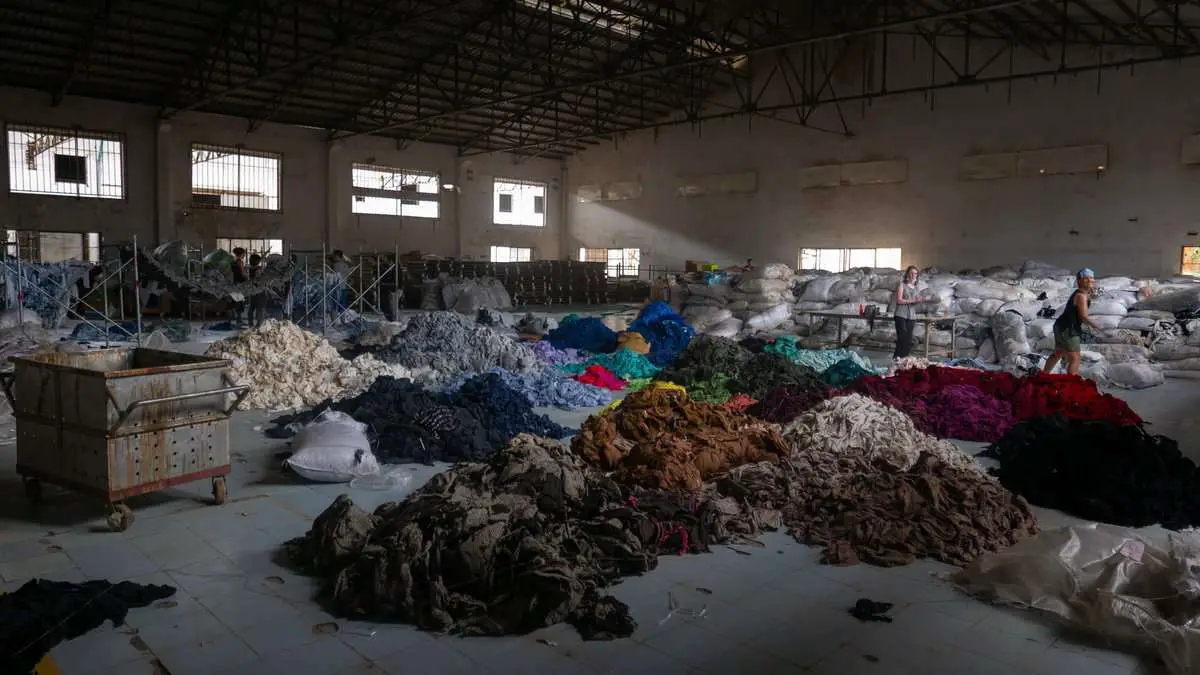Quick Links
The early years of the 21st century saw fast fashion become a household name in the fashion industry. Fast fashion gained huge followership, and its trend skyrocketed due to its approach to design, creation, and marketing of clothing fashions.
Slow fashion, on the other end, although it was not recognized then, existed as the approach to fashion ideologies before the start of the fast fashion era.
It means that fashion has always been slow until fashion brands in the industry took a new turn with the quick-response fashion trends. However, the reckoning dangers posed by the fast fashion industry on the planet have moved the appreciation of ethical clothing and slow fashion principles.
In this article, we will define what slow and fast fashion mean, compare the differences between the two, and discuss the impact of choices we make involving slow and fast fashion.
What is Fast fashion?

When talking about moving toward a more sustainable and ethical future in the fashion industry, it is helpful to understand the buzzword “Fast fashion” behind this movement and to know why this is so in the first place.
Fast fashion is a method that focuses on the quick design, manufacturing, and marketing of high clothing production. Fast fashion uses trends and low-quality materials to lay an impulse for higher demand from end consumers.
While this might increase the profit of retail-fast fashion brands, fast fashion comes at a cost with both social and environmental impacts. The social and environmental impact of fast fashion is discussed subsequently in this article.
How did fast fashion become so successful and manage to take over our closets?
Like other fast production sectors, it takes a short period for cheaply made, trendy fashion products to result in an overwhelming amount of consumption. In a week, many fast fashion retailers release new products multiple times to stay on trend, creating more consumer demand.
If you like to watch a video that brilliantly sums it up, please check out Climate Town and this well researched and funny clip.
What defines fast fashion?
I bet the fast fashion industry wouldn’t have survived for long since its inception in the late 1990s if it didn’t come with some favorable characteristics.
However, what is up for debate is whether its success results from our consumer-driven lives and desire for fresh looks or the industry’s plan of constantly convincing us that we are behind trends.
To sum up, the business model of the fast fashion companies leverages these factors –
1. It is Cheap
Fast fashion makes it possible for mainstream consumers to purchase the new, trendy look seen on models on runways at an affordable price.
Whenever a marketing campaign features a copy including – the price to beat – you are sure the company is inevitably cutting some corners. The same goes for fast fashion.
The urgency created for trending clothing allows for the use of low-quality materials. Checking for quality control might be unnecessary when there is an urgency to get clothes to consumers.
2. It follows a Trend
The shift of fast fashion companies towards a trend-based style contributes to the overwhelming consumption of fast fashion. Fast fashion companies, rather than replenish their stock, replace the sold-out items with new items of a different style.
What this does to consumer behavior is make old clothes look outdated and make us constantly want to keep shopping for hot new, trendier clothes.
3. Mass Production process
To meet the pace-setting trends that lead to the increase in consumer demand, fast fashion companies employ the services of cheap labor to make mass-produced clothing.
Mass production methods place an amount of pressure on the environment and the fashion industry. It drives deeper-negative effects into the fashion world.
How did fashion become so fast?

Once upon a time, shopping for clothing items was considered an event to look forward to as fashion brands displayed new collections and clothing lines several months before their appearance in stores.
The change in shopping behavior began in the late 1990s when shopping became a form of entertainment and spending on clothing increased.
Fast fashion brands motivated this change with cheap trendy garments, which were mass produced at low cost.
Fast fashion is profitable for manufacturers and retailers. No doubt! Releasing new products before the competition jumps on a trend drives a lot of profit for fast fashion brands. And when there are losses, the brand launches a new clothing line, design, or product to recover.
Innovative supply chains among fashion retailers encouraged the growth of fast fashion. The supply chain focused on rapidly producing cost-efficient clothing to meet consumer demands.
For consumers, fast fashion has made it possible to get clothes they want when they want them at affordable prices. People of modest means dream of having a stylish, large wardrobe but can now actualize this with innovative designs from fast fashion.
Many of these factors are the advantage that fast fashion brings to the manufacturers or retail fashion brands and the consumers. They have all contributed to the growth of fast fashion in the industry.
What is the problem with fast fashion?
Despite the pros of fast fashion to consumers’ lifestyles and clothing companies, it faces criticism for its impacts on humans, society, and the environment.
Social Impacts

The social impact of fast fashion acts more on workers in sweatshops who make these garments. The fast fashion industry is associated with exploitative, abusive labor practices.
Mass production happens in developing countries where factory workers are employed to work for long hours and are paid inhumanely low wages. The use of child labor still exists in countries such as Bangladesh, Sri Lanka, and the Philippines.
Fast fashion encourages a “throw-away” attitude among consumers, especially teens and adults in their early twenties, who are more subjected to moving towards the latest fashion trends.
Such an attitude means that consumers will spend more to purchase clothing multiple times. Fast fashion isn’t cheap, after all.
Cheap materials used in the production of clothing garments contribute to clothes being worn once or twice by consumers due to low quality.
Criticisms have followed the copying of designs by fast fashion brands to fast-track clothing trends. Some designers allege that their designs are illegally duplicated and mass-produced by fast fashion companies.
Human and Environmental Impacts

The heavy cost of fast fashion ends up on the planet where the impact of manufacturing waste, obsolescence from fashion trends, and pollution backlogs.
Water pollution takes a massive hit from garment production and unregulated factories. Toxic chemicals often used to create vibrant colors, prints, and fabric finishes are released into water bodies, causing pollution and making them unfit to use by locals.
These toxic chemicals can enter our bodies through our skin or harm factory workers in the production process.
We buy twice as much as we did in 2000 and wear half as long. Because fast fashion is cheap and disposable, consumers are throwing away their poor-quality clothing at an unprecedented rate.
Textile waste made from synthetic or cheap materials ends up in landfills. While these fast fashion garments in landfills produce toxic substances and greenhouse gases, finite resources are consumed to make new clothes.
And in a bid not to ruin their image, fast fashion brands would incinerate their old stock instead of donating them.
Adding to the level of greenhouse gases, the pollution of water and land, contribution to chronic health conditions are some of the costs paid for the trendy clothes occupying your closet.
What is the meaning of slow fashion?

Slow fashion is the exact opposite of what fast fashion stands for.
Slow fashion is an alternative to fast fashion. Unlike quick fashion, which focuses on keeping up with trends as fast as possible, Slow Fashion aims at simple, timeless styles not influenced by modern trends.
The slow fashion movement advocates environmentally friendly production methods to protect human beings and the environment.
Slow fashion encourages the use of eco-friendly materials designed for long-term durability and conscious consumerism on the part of consumers. It seems to me that investing in slow fashion items that can last for the duration of the wear cycle is a good investment.
Hey, if you find this content helpful, why not sign up for more tips and useful updates on everything sustainable and zero waste?
What are the characteristics of the slow fashion movement and its principles?

For fashion brands, slow fashion is putting up a sustainable approach and a slow sign to excessive fashion consumption, overcomplicated supply chains, and the use of harmful substances in clothing production.
In addition to a brand’s effort to make sustainable and ethical fashion, the slow fashion movement asks consumers to shift towards sustainable shopping habits and rethink to avoid mindless consumption.
Consumers can participate in the slow fashion movement by practicing the following principles –
Investigate
Take a moment or two to investigate the clothes you want to buy are from a sustainable clothing brand. To help with this, Certified B Corp brands are sustainable fashion brands that have achieved sustainability standards.
And you can also check out several other articles about slow fashion brands:
Invest
Clothes are investments. An investment in a slow fashion means you are investing in high-quality materials that will last longer.
Slow fashion garments use sustainable fabrics compared to fast fashion clothing made from synthetic raw materials.
A top-tier benefit of slow fashion is that you enjoy a minimalist lifestyle and also save money in the long term.
Thrift
Thrift shopping is an eco-friendly and sustainable fashion alternative to fast fashion. It reduces the need to produce new clothes and prevents pollution, saving energy and finite resources.
Repair
Repairing our clothes causes an appreciation for the function of our clothes. With the life cycle of modern clothes becoming short, it is incredibly important that we mend our clothes.
Old clothes can also be altered into new designs to fit their use.
Resell
In the clamor for a minimalist wardrobe, how do we declutter our old items?
Reselling help solve the problem of thinking about old clothes ending up in landfills.
Donate
Donating is one of the best choices if you are trying to declutter your closet. Choosing to protect the planet by reducing waste and earning some extra cash is a WIN-WIN.
Slow fashion VS Fast fashion: What are the differences between them?

Slow fashion vs fast fashion are classified generally based on the following criteria –
Materials
The type of material used in the manufacturing of fashion items sets the basis for sustainability.
Fast fashion relies on synthetic materials that are harmful to the environment. To sell at extremely low prices, fast fashion companies use cheap materials made from non-renewable fossil fuels.
On the other hand, slow fashion advocates for the use of sustainable materials that are organic, natural, and can be recycled or repurposed into other items, thereby producing less waste.
Labor
Production in fast fashion is outsourced to developing countries where labor laws are unfavorable to workers, and they are not entitled to fair wages. Slow fashion workers are treated fairly and receive higher wages under better working conditions.
Quality
Fast fashion items are not expected to last for a long time since they are made from low-quality materials. Slow fashion is focused on the quality of its items instead of quantity.
Manufacturing
The manufacturing practice of fast fashion has negative environmental impacts, including pollution and excessive waste. Slow fashion incorporates sustainable and eco-friendly production methods and is ready to recycle or repurpose items.
Price
Slow fashion is more expensive due to higher quality materials, more sustainable production processes, and ethical labor.
Fast fashion, on the other hand, employs cheap materials, a complicated supply chain, and pays workers low wages, which, in turn, allows them to sell at low prices.
Slow fashion VS Fast fashion: Changes you can make for a positive impact on the planet

To leave a positive impact on the planet, common practices in the industry and our lifestyles need to change. The best choice yet is to adopt slow fashion principles to build a sustainable fashion world.
Following a ‘less is more’ approach will help fashion retailers to produce clothes that consumers will love and wear for years.
Helping the Planet
Fashion retailers can adapt to on-demand manufacturing to address the issues of waste from mass production, poor quality, and a lack of sustainability.
Slowed-down production will reduce production times, which, in turn, reduces the carbon footprint and emission of greenhouse gases. A positive approach to help in environmental rehabilitation.
What is your take on this? Do you prefer to have a few high-quality items in your wardrobe, or are you buying lots of cheaply made clothes? I am curious, so let me know in the comments below.
